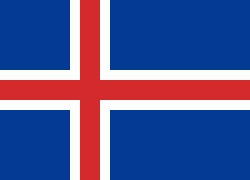Borgarbyggð
Borgarbyggð is a municipality in the west of Iceland.
The biggest township in the municipality is Borgarnes, with a population of 1,887 inhabitants. Other densely populated areas in the municipality include Bifröst, Hvanneyri, Kleppjárnsreykir, Reykholt and Varmaland.
There are two universities in Borgarbyggð; Bifröst University in Bifröst and the Agricultural University of Iceland in Hvanneyri. There is a secondary school in Borgarnes, Menntaskóli Borgarfjarðar. The municipality runs two primary schools; one is in Borgarnes and the other has three separate facilities in Hvanneyri, Kleppjárnsreykir and Varmaland. The municipality also runs a music school in Borgarnes.
The biggest township in the municipality is Borgarnes, with a population of 1,887 inhabitants. Other densely populated areas in the municipality include Bifröst, Hvanneyri, Kleppjárnsreykir, Reykholt and Varmaland.
There are two universities in Borgarbyggð; Bifröst University in Bifröst and the Agricultural University of Iceland in Hvanneyri. There is a secondary school in Borgarnes, Menntaskóli Borgarfjarðar. The municipality runs two primary schools; one is in Borgarnes and the other has three separate facilities in Hvanneyri, Kleppjárnsreykir and Varmaland. The municipality also runs a music school in Borgarnes.
Map - Borgarbyggð
Map
Country - Iceland
 |
 |
| Flag of Iceland | |
According to the ancient manuscript Landnámabók, the settlement of Iceland began in 874 AD when the Norwegian chieftain Ingólfr Arnarson became the first permanent settler on the island. In the following centuries, Norwegians, and to a lesser extent other Scandinavians, immigrated to Iceland, bringing with them thralls (i.e., slaves or serfs) of Gaelic origin.
Currency / Language
| ISO | Currency | Symbol | Significant figures |
|---|---|---|---|
| ISK | Icelandic króna | kr | 0 |
| ISO | Language |
|---|---|
| DA | Danish language |
| EN | English language |
| DE | German language |
| IS | Icelandic language |
| NO | Norwegian language |
| SV | Swedish language |















